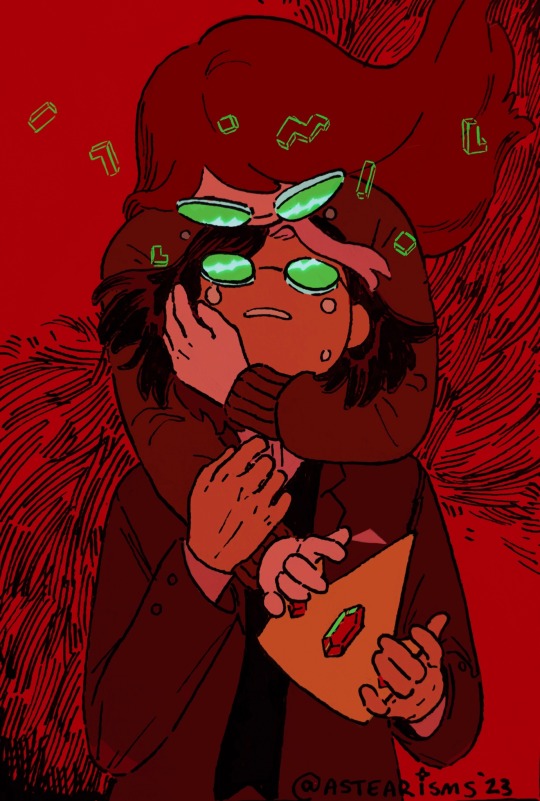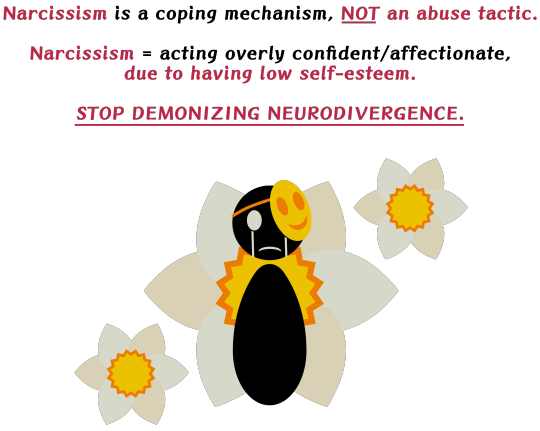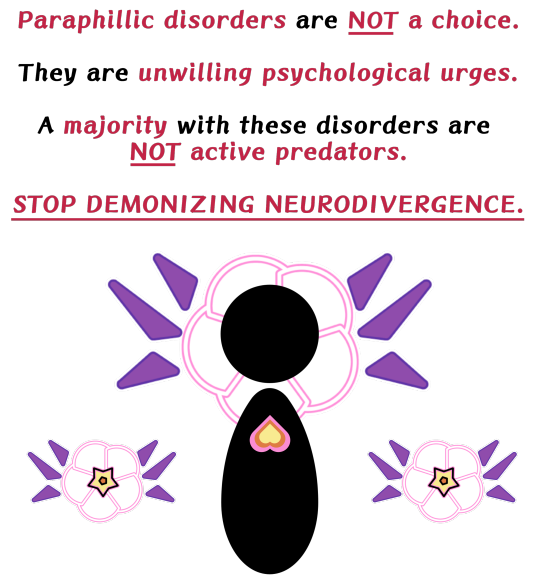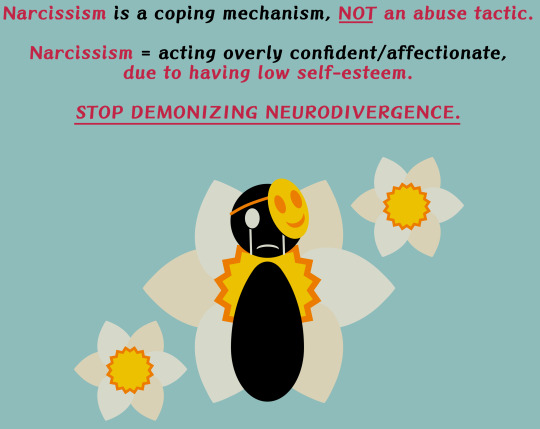#Compassion and Empathy
Explore tagged Tumblr posts
Text
The Positive Impact of Altruism on Society
Altruism has a profound and positive impact on society, fostering stronger social bonds, creating supportive communities, and promoting well-being for both individuals and groups. Here’s how:
1. Strengthening Social Cohesion
Building Trust: Acts of altruism promote mutual trust among individuals, which is essential for building cohesive communities. When people witness or experience altruism, they are more likely to help others, creating a reinforcing cycle of generosity.
Reducing Conflict: Altruism helps to reduce social tensions by encouraging people to empathize with others and act for the common good, even at a personal cost. This mindset supports peaceful interactions and a more tolerant society.
2. Supporting the Vulnerable
Improving Access to Resources: Altruistic actions provide essential resources—like food, shelter, healthcare, and education—to vulnerable populations. By addressing these basic needs, altruism can reduce poverty and improve the quality of life for marginalized individuals.
Encouraging Inclusivity: Altruism often leads to initiatives that support those marginalized or neglected by society. These efforts foster inclusion and promote equality, helping to create a society that values all individuals.
3. Enhancing Mental and Emotional Well-Being
Boosting Happiness and Life Satisfaction: Research shows that both giving and receiving altruism can increase happiness and reduce stress. Altruistic behavior stimulates areas of the brain associated with pleasure, contributing to overall mental well-being.
Reducing Loneliness: Altruistic actions help people connect with others in meaningful ways, reducing feelings of isolation. This interconnectedness promotes resilience and a sense of belonging.
4. Encouraging Civic Engagement
Fostering Volunteerism: Altruism often inspires volunteer work, which strengthens communities by addressing local needs and problems. Volunteerism also encourages civic engagement, increasing people’s investment in their communities.
Promoting a Culture of Responsibility: Altruistic behavior encourages individuals to take responsibility for the welfare of others, promoting a culture where people feel accountable to one another and motivated to contribute positively.
5. Driving Economic Benefits
Increasing Productivity: Altruistic actions can lead to healthier, more resilient workers and communities, which boosts productivity and contributes to economic stability. Supporting social programs, for example, reduces long-term costs associated with healthcare and crime.
Attracting Socially Responsible Investments: In societies where altruism is valued, there is often greater support for businesses and organizations that prioritize social good. This attracts ethical investments and encourages businesses to adopt sustainable practices.
6. Promoting Positive Social Change
Advancing Social Justice: Altruism drives social justice initiatives, addressing issues such as inequality, discrimination, and access to resources. These efforts foster an environment where everyone has the opportunity to thrive.
Inspiring Innovation: Altruism often motivates people to find creative solutions to societal challenges, such as improving healthcare access, sustainability, or educational opportunities. These innovations benefit society as a whole and set new standards for problem-solving.
7. Encouraging Environmental Responsibility
Supporting Sustainability: Altruistic values lead to a greater awareness of environmental stewardship, as people seek to protect and preserve resources for future generations. Many environmental movements are rooted in altruism, emphasizing a commitment to the collective welfare of both humanity and the planet.
Altruism builds a foundation for healthier, happier, and more resilient societies. By fostering cooperation, trust, and compassion, it not only addresses immediate social issues but also cultivates a forward-thinking culture invested in the well-being of all. Through the positive ripple effects of altruistic actions, society can achieve greater solidarity, sustainability, and long-term prosperity.
#philosophy#knowledge#epistemology#learning#education#chatgpt#ethics#psychology#economics#altruism#sociology#Altruism and Society#Social Cohesion#Community Well-being#Mental Health Benefits#Civic Engagement#Social Justice#Economic Benefits of Altruism#Environmental Responsibility#Compassion and Empathy#Positive Social Change
4 notes
·
View notes
Text
Claiming Grace—So You Can Share It
In the eighth chapter of John’s Gospel, we encounter a deep and unsettling scene: a woman caught in the act of adultery is brought before Jesus by the religious leaders of the day (the first hint of hypocrisy: where’s the man she was committing adultery with?). By now, they know there’s something different about Jesus, and many of them do not like it, so they’re trying to find ways to snare Jesus…

View On WordPress
#Biblical lessons#Community and fellowship#Compassion and empathy#Grace and forgiveness#Moral reflections#Overcoming judgment#Practice what we preach#Transformation stories
0 notes
Text

catalysts, protectors
#man those episodes#so many things put into perspective#like Simon’s role as a protector and his kindness and empathy and compassion and existence being the catalyst for the rest of ooo to#flourish#and Betty is a protector of Simon#I wonder if the last two episodes will explore more of her character? there’s so much to be explored about her giving so much of herself#to Simon but not thinking about what she wants for herself#do we get to explore her feelings or see her at all? will she have changed or learned to let go#I think there will be some sort of closure for the both of them#but at what cost#I am still crying over that scene with Simon’s memory of Betty and their song#my art#fionna and cake#fionna and cake spoilers#simon petrikov#betty grof#petrigrof#golbetty
31K notes
·
View notes
Text
Message of the year:
“How do you spot an idiot? Look for the person who is cruel. The kindest person in the room is often the smartest.” — Gov Pritzker
27K notes
·
View notes
Text
i've seen quite a bit of confusion about this, so let me attempt to clear things up :
empathy is the ability to feel somebody's emotions as though they are affecting you personally. for example, somebody tells you "my dog died last night!" -> you now feel as though you've lost a pet personally -> you feel grief and sadness just like the other person. not everyone has empathy. it's a trait some people develop and others don't. some have high empathy, some have low empathy, some (like me) have none.
sympathy is the ability to understand and care about somebody else's struggles, even if you don't feel them yourself. so, somebody tells you their dog died -> you realize how this affects them emotionally -> you care about this person, and are upset that they are suffering. not everyone has sympathy either! it's a scale, just like empathy.
compassion is doing something to relieve another person's suffering or make them feel better. somebody tells you their dog died -> you don't want them to remain upset -> you come up with ways to help them feel better, like offering comfort and distractions, or other forms of support. compassion is a learned trait, not something you can be born with like empathy or sympathy. anyone can learn to be compassionate, although some may struggle more with it than others; it's a skill, just like anything else.
however, none of these are required to be a good person. that's a choice you make on your own accord. i hope this clears things up!
#♡ muyang mewls#low empathy#no empathy#npd#aspd#actually antisocial#antisocial personality disorder#actually narcissistic#narcissistic personality disorder#actually npd#actually aspd#cluster b#empathy#sympathy#compassion
8K notes
·
View notes
Text
If you cut, you're valid.
If you burn, you're valid.
If you get excessive piercings, you're valid.
If you get excessive tattoos, you're valid.
If you pull your hair, you're valid.
If you scratch yourself, you're valid.
If you bite yourself, you're valid.
If you pinch yourself, you're valid.
If you bruise yourself, you're valid.
If you hit yourself, you're valid.
If you over-exercise, you're valid.
If you pick your skin, you're valid.
If you use drugs (recreationally), you're valid.
If you restrict necessities (medicine, water, food...), you're valid.
If you fuck till you bleed, you're valid.
Self-harm is self-harm, not matter how you do it. And everyone deserves help.
#depressing shit#d3pr3ss10n#d3pr3ss3d#screaming crying throwing up#sad thoughts#d3pression#tw depressing stuff#sadgirl#depressiv#tw depressing thoughts#mental health awareness#self awareness#empathy#awareness post#understanding#alignment#wellbeing#compassion#$h tw#$h addict#$h h4rm#988blr#jirai lifestyle#self mut1lation#jiraiblr#$h tumblr#$hblr#$elf harm#$elf h4rm#s3lf mutilation
640 notes
·
View notes
Text
this bothers me a lot as someone with a low empathy score:
no, you cannot learn empathy. empathy is when you feel and share the emotions of the other person. your friend is sad? you feel sad.
you can learn to be understanding, and compassionate, and how to react when you don't feel those things, but you cannot learn to experience a sensation that you do not.
#actually autistic#low empathy#i have worked VERY hard on my compassion dammit#and being told it's not good enough constantly because i dont physically feel your sadness?#right im the monster
3K notes
·
View notes
Text

Exactly, this arc and wolfy revitalized my faith










You ever started reading a webcomic for indulgent isekai fun but instead get your religious trauma healed through a fictional saint twink
Anyways this manhwa is The Warrior Returns/Hero has Returned, very violent, take care when reading
#man i wish for more genuine stuff like this#the way it starta off with “numbers fighting”#and focusing on “smiting” them#but slowly comes to that of mercy#compassion and empathy#the true core of it all really
47 notes
·
View notes
Text

#spiritual awakening#spiritual awareness#wisdom#good advice#boundaries#self care#take care of yourself#empathy#compassion
588 notes
·
View notes
Text
To Have As Much Compassion For the Coyote As the Rabbit
Spring is here, and all throughout my social media are posts by people panicking about coyotes. It’s not uncommon for these native canines to be more visible this time of year since they have dens full of hungry pups to feed and protect. You might see them on the hunt for mice and other rodents, or you could be quietly but firmly escorted away from a den site. There’s a chance you’ll even see a coyote toting a nice, fat rabbit home to her pups.

That last one tends to upset some folks. I’ve seen people say they’ve deliberately scared away predatory animals to cause them to drop their prey, or in some cases even physically wrestled the prey away. Sure, that may make you feel like some sort of hero for saving the rabbit. But why does the rabbit deserve to live while the coyote’s pups slowly starve to death? Why should a Cooper’s hawk not be allowed to eat the house finch it just plucked from a convenient bird feeder? Who says we are right to get in the way of a garter snake capturing a tree frog? And what if the rabbit you liberated has internal injuries that slowly kill it anyway once it runs away from you in fright?
Read under the cut to find out how many self-described "nature lovers" only really love part of nature.
Many of us have a Disneyfied approach to nature. We have a great deal of sympathy for herbivores* like Bambi and Thumper, and we give Flower the striped skunk a free pass since most of what he eats is insects. We might get annoyed when Bambi starts to browse on the vegetables and rose bushes, but we don’t react with the sort of wailing dismay that we do when a mountain lion takes out one of Bambi’s herd members.
And yet an American robin tugging earthworms out of the ground and swallowing them alive is no different from a bobcat pouncing on the robin. Both are examples of one animal preying upon another, a perfectly normal part of the cycles of nature for 800 million years. Without carnivores (and insectivores and omnivores), herbivores would quickly overpopulate, depleting plant communities to ecologically disastrous states, and crash life as we know it. Life is all about inhabiting niches, and carnivores fill their evolutionary roles quite effectively.
Many people who claim they “love nature” only love the herbivorous, gentle, fuzzy parts of it, and refuse to examine or change their revulsion of or violence toward the rest. That’s a big problem. The elements of nature they consider to be “ugly” or gross” are no less important than the “pretty” or “adorable” ones. And systematically removing the “bad” animals can have a detrimental effect on the entire ecosystem. The benighted person who kills every snake they see is only going to cause an increase in rodent populations, which of course raises the likelihood of diseases, crop damage, and gnawed electrical wires in the attic.

Moreover, when we try to apply the limitations of human ideals of morality to the rest of nature, we ignore the concept of existence value: that all beings are important simply because they are here with us in this amazing, vibrant world we share. What are we implying when we say that the coyote pup is less deserving of life than the rabbit?
We have interfered with nature way too much as it is, in much larger ways than this. Yet it is a simple act to allow these individual interactions between species play out as they naturally would without feeling that we have to step in and play moral referee. Our arrogance at thinking that nature exists for us and our priorities is how we found ourselves in our current ecological predicament. The least we can do is be hands-off in our local food web. Consider it good practice for having healthier boundaries toward nature, rather than constantly centering ourselves in every decisions we make regarding other living beings.
Finally, practice having some compassion for the coyote busily trying to feed her young–and herself. She can’t run to the grocery store and get a package of industrially farmed beef to make burgers for the kids. Her entire life is a constant race against death, whether from starvation, disease, extreme heat or cold, and of course the interference of humans. Imagine the relief she must feel when she successfully manages to catch something bigger than a mouse–do you think we’re the only ones whose reward centers in our brains light up at a job well done? Think of how excited your dog gets when he manages to catch the ball–that’s not only a trait of domesticated animals.

Have some compassion for the coyote pups eagerly awaiting their next meal and their parents' warmth. Photo by John Harrison, CCA-SA-3.0-Unported
Give and take, life and death, nutrients and energy endlessly cycling through body after body after body of animal, plant, fungus, bacteria–that is the grand dance in which the coyote and the rabbit play their parts. Appreciate this eons-old round without feeling the need to alter the tempo, and be glad that tonight the coyote pups will sleep contentedly with full stomachs.
*For the record, many “herbivores” will opportunistically eat meat, live or dead, for the nutrients. Bambi and his buddies are quite happy to pluck a perfectly healthy baby bird or two out of a nest as a snack, and will chew on carrion now and then, too.
Did you enjoy this post? Consider preordering my book The Everyday Naturalist, taking one of my online foraging and natural history classes or hiring me for a guided nature tour, or checking out my other articles! You can even buy me a coffee here!
#coyotes#rabbits#nature#wildlife#tw death mention#tw animal death#hunting#animals#ecology#conservation#tw snakes#copperhead#snakes#wild animals#naturecore#nature lovers#environment#compassion#empathy#animal behavior
377 notes
·
View notes
Text
Authentic compassion is only possible through detachment.
If we care for others but are not detached, we might try to use them for our own happiness. We risk adding to their suffering instead of helping to relieve it.
To cradle another being with our attention, fully considering their needs beyond our own preferences, we cannot remain attached to our personal desires or opinions.
As long as compassionate activity is self-referencing, it remains incomplete.
Complete your compassion through detachment and you will understand the true meaning of selflessness: freeing others from the burden of your happiness.
Then your activity becomes like rainfall-- nourishing all who cross its path.
#detachment#compassion#selflessness#selfless#kindness#empathy#healing#spirituality#buddhism#shadow work
212 notes
·
View notes
Text
Part 1 of our new "stop demonizing neurodivergence" series!
Everyone is free to use these designs on shirts, stickers, pins, whatever they'd like, as long as they are using it for inclusive purposes! Just don't claim it as your own, please.
Take this as a reminder to use words correctly and avoid spreading negative stereotypes about neurodivergence. Especially when speaking about abusers and politicians. Don't conflate abuse or fascism with neurodivergent traits.
There is no such thing as an "evil disorder."
Transparent versions:



Versions with backgrounds, for viewing purposes:



The sociopathy & psychopathy design uses the hypoempathy flag colors by @neopronouns. The one with the orange brain is meant to represent a person with low empathy, with the question mark symbolizing how they do not connect to the other person's feelings, and the heart dialogue shows they are still being kind despite not understanding. The one with the blue brain is meant to represent a person with typical or high empathy, with the line connecting their brain to the other person's brain.
The narcissism design uses narcissus flowers (daffodils). Narcissus flowers were named after Narcissus, who in some versions of the myth turned into a flower out of despair of his reflection never being able to give him the affection he desires. The smiling mask represents the confident/affectionate facade, while the person crying represents how they are suffering internally.
The paraphillic disorder design uses the sunset para symbol by @a-hydrangea-named-acti, representing anti-contact & pro-recovery for paraphilic disorders. The upside down heart represents paraphilic attraction itself, and how it goes against the norm of typical attraction.
----
Check out our other designs!
I support equality always
Non-binary is an umbrella term
Gender and sex are spectrums
Nobody chooses their sex or gender
Intersex people exist
A-specs unite
Attraction is individual, not societal
Queerness is natural
Racial equality matters
All disabilities matter
Support all neurodivergence
#hypoempathy#empathy#sympathy#compassion#narcissism#npd#narcissist#narcissistic personality disorder#cluster b#cluster b safe#npd safe#npd traits#aspd safe#aspd traits#aspd#antisocial personality disorder#sociopath#psychopath#paraphile safe#paraphilia#anti contact#pro recovery#sunset paras#sunset paraphile#neurodivergence#neurodiverse#neurodivergent#neurodiversity#personality disorder#behavioral disorder
273 notes
·
View notes
Text

#love#serpent#kundalini#meaning of life#compassion#empathy#red#sun and moon#psa#spiral#growth#primal pair
311 notes
·
View notes
Text


I'm no doctor in empathy and compassion
#classic doctor who#fourth doctor#logopolis#tom baker#tegan jovanka#janet fielding#classic who#empathy#no empathy#compassion#no compassion#silly who#dw memes
180 notes
·
View notes
Text
your reminder that experiencing empathy and compassion are not what ‘makes us human’.
there are numerous disorders that can impact your ability to experience these things and those who don’t experience either one or both of them are still deserving of your understanding.
#actually mentally ill#cluster b#npd#actually npd#aspd#actually aspd#actually bpd#bpd#empathy doesn’t determine who you are as a person#no empathy#low empathy#no compassion#low compassion#actually autism#diagnosed autistic#autism#autistic#actually autistic#actually narcissistic#actually antisocial#actually borderline#actually cluster b#narc abuse isnt real#narc posting#narcissistic sociopath#actually sociopathic#mental illness#ableism#sanism#empathy
138 notes
·
View notes
